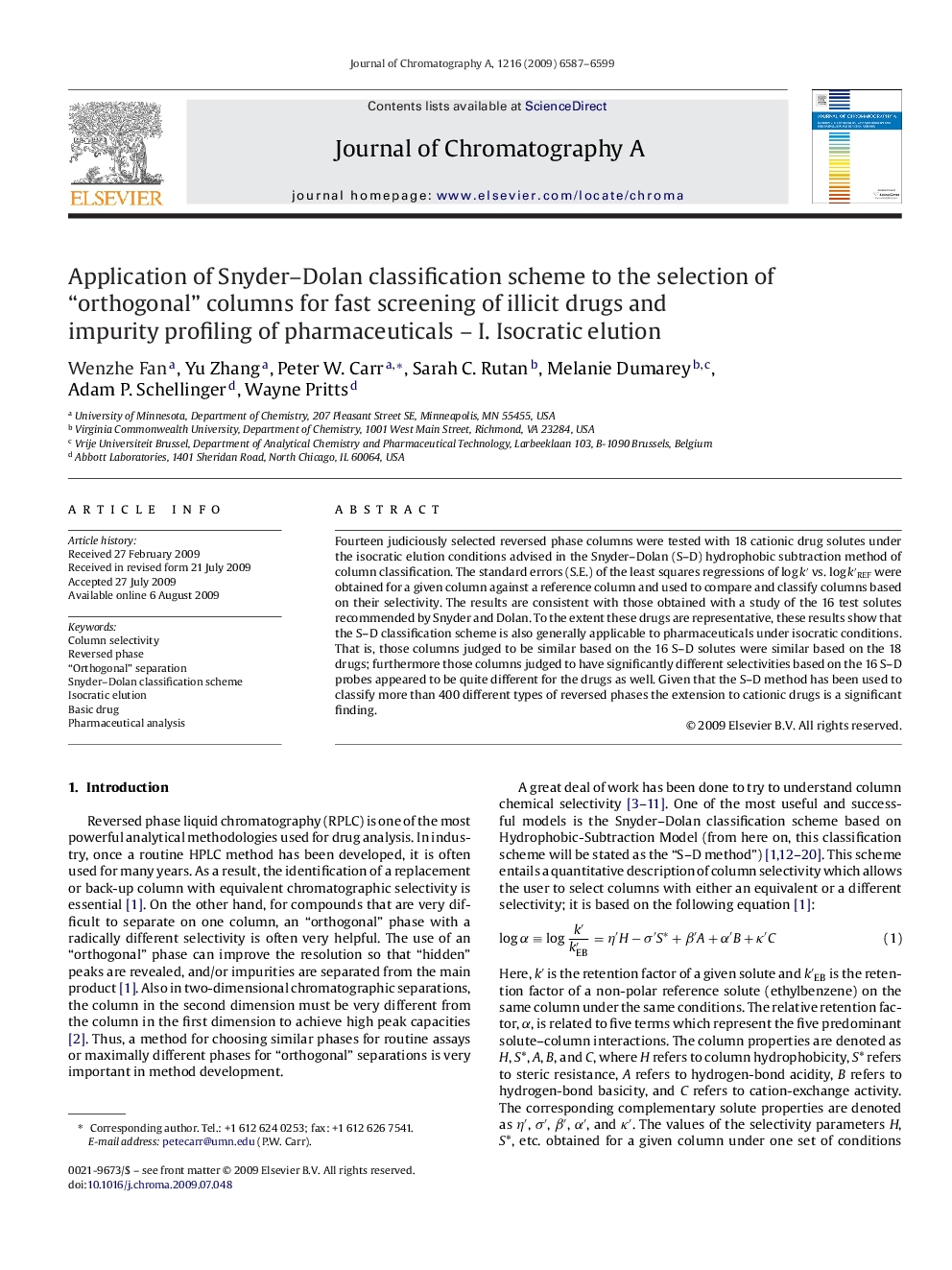| Article ID | Journal | Published Year | Pages | File Type |
|---|---|---|---|---|
| 1210660 | Journal of Chromatography A | 2009 | 13 Pages |
Fourteen judiciously selected reversed phase columns were tested with 18 cationic drug solutes under the isocratic elution conditions advised in the Snyder–Dolan (S–D) hydrophobic subtraction method of column classification. The standard errors (S.E.) of the least squares regressions of log k′ vs. log k′REF were obtained for a given column against a reference column and used to compare and classify columns based on their selectivity. The results are consistent with those obtained with a study of the 16 test solutes recommended by Snyder and Dolan. To the extent these drugs are representative, these results show that the S–D classification scheme is also generally applicable to pharmaceuticals under isocratic conditions. That is, those columns judged to be similar based on the 16 S–D solutes were similar based on the 18 drugs; furthermore those columns judged to have significantly different selectivities based on the 16 S–D probes appeared to be quite different for the drugs as well. Given that the S–D method has been used to classify more than 400 different types of reversed phases the extension to cationic drugs is a significant finding.
